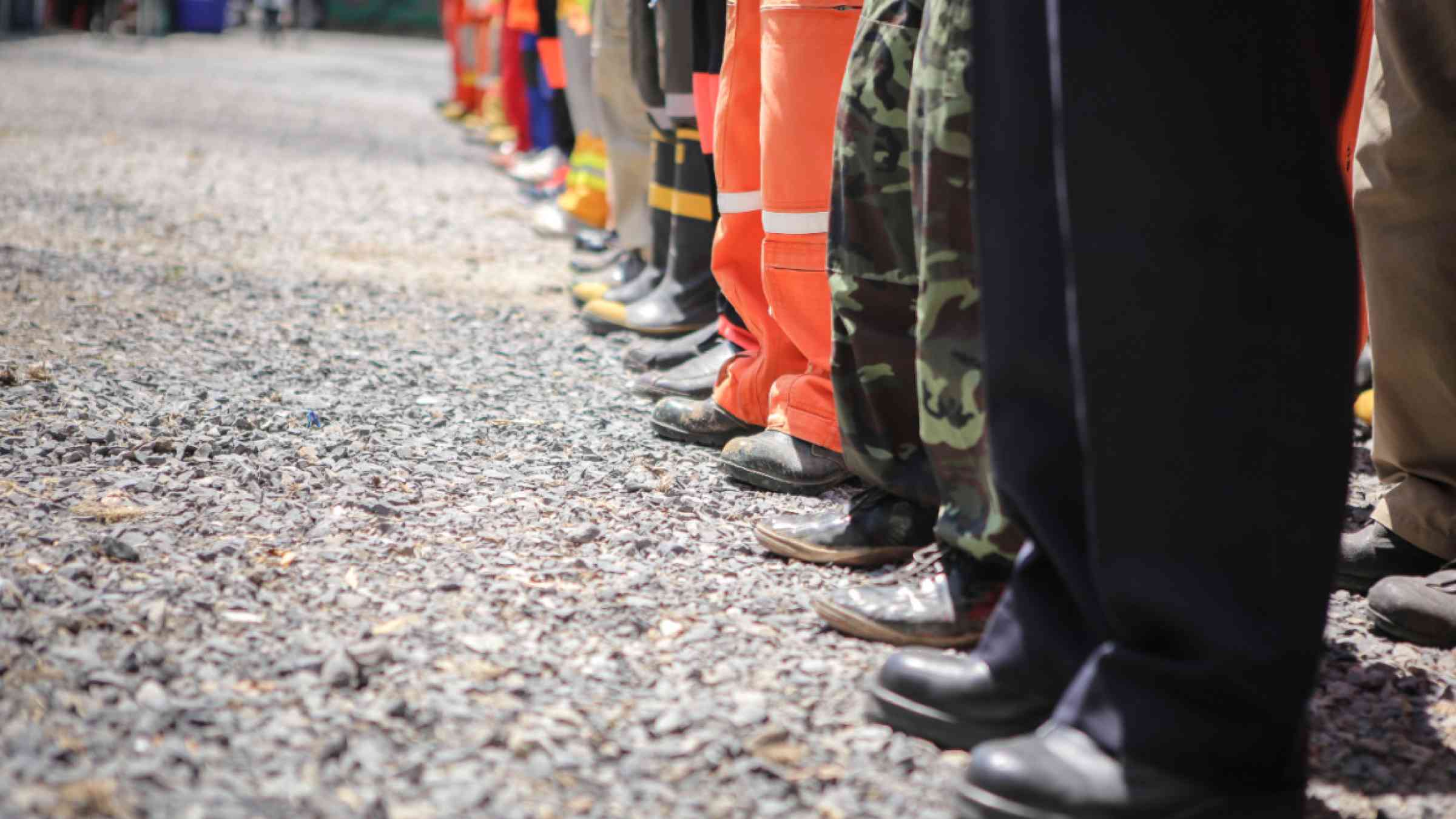How a simulation exercise can prepare remote communities for flood emergencies

Kutiyakabar, on the banks of the Jogbuda river, is one of the most beautiful communities in Nepal’s Dodhara Chadani municipality. Flooding is a serious problem, however; every year, hundreds of people are forced to live in a temporary shelter for weeks.
Given Kutiyakabar’s remote location – access is only possible via a narrow suspension bridge – there is a great need for the community to be as prepared and self-sufficient as possible in its response to flooding. Kuna, which sits on the Mahakali river, is similarly vulnerable, as are several locations across rural Nepal.
Since July 2021, The Zurich Flood Resilience Alliance and Mercy Corps have been working with Nepal’s National Environment and Equity Development Society (aka NEEDS Nepal) to measure levels of resilience in places like Kutiyakabar and Kuna, and implement ways to improve it.
As part of the programme, a Community Disaster Management Committee (CDMC) was formed, along with three task forces covering Search & Rescue, First Aid and Early Warning Systems (EWS). Last month, the committee took the decision to simulate a flooding event.
Prepared communities are safer communities
Before getting started, those living in the communities met to familiarise themselves with the routes to safe zones. Facilitators formed groups with assigned responsibilities, and the EWS task force briefed everyone on the meaning of the different sirens that would be heard during the simulation (and in a real-life emergency).
One of the key purposes of the simulation was to bring together various actors connected to Disaster Risk Reduction, and clarify the responsibilities that would be assumed by each in an emergency. The Nepal Red Cross, the Nepal Police, the District Emergency Operation Center, Mercy Corps, NEEDS and other local NGOs were among those who participated.
Running the simulation
On 13th June 2022, the Deputy Mayor of the Dodhara Chadani municipality joined other key personnel in officially starting the simulation, with the first warning siren (used to indicate an imminent flood) sounding at 9am.
An hour later, a second siren alerted the community to the water level crossing a significant threshold. The third and final siren prompted the community to evacuate via the predetermined safe routes. People with disabilities, pregnant women, the elderly and those with young children were prioritised for evacuation.
Those who were designated for Search & Rescue were assisted by the local police, with first aiders attending to those simulating injuries and implementing a hospital referral process. Where potentially life-saving equipment would be required, the task force drilled the correct operation of these devices.
Reflecting on progress
Once the event was over, it was heartening to see the improvements that had been made to the community’s level of preparedness. Those participating in the simulation knew who to turn to for help, and where to go. The roles assigned to CDMC members, as well as other responders, were carried out swiftly and efficiently, with effective communication between upstream and downstream communities.
The final stage was to collate the learnings from the simulation – everything that worked well, as well as that which could be improved – into a flood response plan. Created with the full participation of the flood-prone communities, this will ensure that best practice is adhered to in future.
Thanks to this exercise, which was carried out at eleven communities in total, with the direct involvement of over 2,200 beneficiaries, the risk to life and livelihoods for remote communities in Nepal will be significantly reduced in the event of a real flood.